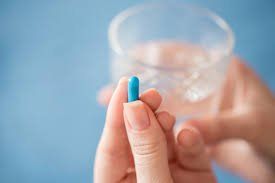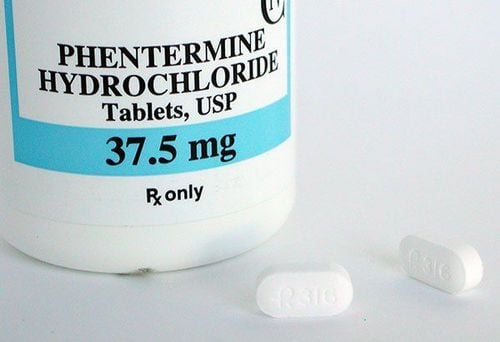This is an automatically translated article.
Myocardial infarction is a dangerous cardiovascular disease and has many serious complications that occur when the coronary artery, the artery supplying blood to the heart muscle, is blocked. Therefore, preventing myocardial infarction in general and increasing physical activity in particular in people with or without cardiovascular risk is an essential measure to help reduce the incidence of this disease.1. What is a heart attack?
Myocardial infarction belongs to acute coronary syndrome, is a cardiovascular disease that occurs when a blood clot or any cause blocks part or all of a coronary artery, a blood vessel system that functions as a blood vessel. ability to supply blood and nutrients to heart muscle cells to function. When the blood supply to the heart is reduced, the activity of the heart muscle will be weakened and gradually lost, which leads to serious complications and can lead to death. There are two types of myocardial infarction: ST-elevation myocardial infarction (STEMI) and non-ST-elevation myocardial infarction (NSTEMI).
Causes of myocardial infarction are divided into two groups:
Atherosclerotic disease: The common cause of myocardial infarction. Non-atherosclerotic: Rarer, often related to congenital anomalies of coronary arteries such as fistula, malformation, wrong place of origin... Coronary artery infection such as Kawasaki disease, spasm Non-atherosclerotic coronary artery disease, coronary artery blockage caused by a blood clot coming from somewhere else. Currently, this heart attack is often associated with the following factors:
Modifiable factors (those that can be prevented by different means): Psychological problems such as stress at work, lonely life, depression, little social support... are factors that increase the risk of atherosclerosis. Smoking: Smoking increases the risk of heart attack by 50% with a mortality rate of more than 60-85%. Overweight and obesity: In developed countries, overweight and obese people account for 25-49% of heart attack patients. Coronary Arterial Inflammation: Atherosclerosis with a continuous inflammatory process forms lesions, which can lead to acute thrombotic events. Inactivity: People with limited physical activity have a higher rate of heart attack than people who are regularly physically active. Alcohol use Diseases such as hypertension, diabetes, dyslipidemia: As a risk factor for cardiovascular disease in general and myocardial infarction in particular. Unmodifiable factors : Age : The older you get, the more likely you are to have a heart attack. Gender: Myocardial infarction is more common and has an earlier onset in men. Menopause: Postmenopausal women have a high rate of heart attack. Family history: Patients with previous generations of cardiovascular diseases in general and myocardial infarction in particular will have a higher incidence. Ethnicity: People of South Asian and East Asian descent have a higher rate of heart attack, while blacks have a lower rate of heart attack.
2. Clinical symptoms of myocardial infarction
2.1. Symptoms Chest pain is the earliest and most common symptom, including the following features: Pain with sudden onset, severe pain with a feeling of squeezing behind the sternum. May spread to the chin, shoulder, left arm or may spread to the epigastrium. Usually lasts > 30 minutes. Accompanying symptoms such as: Sweating, shortness of breath, fatigue, nausea, vomiting. Some patients did not have chest pain but had other symptoms such as impaired consciousness, fatigue, palpitations, shortness of breath, fainting or coma, low blood pressure, increased blood sugar... 2.2. Subclinical Abnormalities on the electrocardiogram . Cardiac biomarker (cardiac enzyme) test. Echocardiography helps to aid in the diagnosis. Other tests such as electrolytes, liver and kidney function, blood lipid test... should be done within 24 hours.
3. Physical activity in the prevention of myocardial infarction
Physical activity is the foundation of cardiovascular disease prevention in general and myocardial infarction in particular. This approach reduces all-cause mortality and myocardial infarction deaths, while increasing physical health and improving mental health.
3.1. Recommendations for physical activity to prevent myocardial infarction Physical activities are activities that involve sports movements such as walking, jogging, swimming, cycling, rowing, aerobic exercise. Also include normal daily activities such as climbing stairs at a pace of 20 steps/20 seconds, brisk walking, housework or gardening. Moderate-intensity physical activity or aerobic exercise for 2.5 to 5 hours per week reduces the rate of death from myocardial infarction. Results were almost similar in those who were physically active for 1 to 1.5 hours per week. Be physically active at least 3 to 5 times per week or preferably daily. Patients should accumulate at least 30 minutes per day for 5 days per week with moderate intensity i.e. 150 minutes per week or 15 minutes per day. 5 days per week of intense intensity i.e. 75 minutes per week, or a combination of both for equal duration. Physical activities can be divided into small shifts of at least 10 minutes in duration. To control blood lipids or lose weight, exercise time should be longer from 60 minutes to 90 minutes per day. 3.2. Rhythmic physical activity Rhythmic physical activity is a type of physical activity with the movement of large muscle blocks in a rhythmic manner and maintained for a certain period of time. Rhythmic physical activity is widely studied and recommended with good improvement results. Aerobic physical activity was also adjusted in frequency, duration, and intensity. People who do not reach the minimum level of activity should start with low-intensity exercise, and healthy people should do moderate or vigorous aerobic physical activity. This intensity is classified into two types as absolute intensity or relative intensity. 3.3. Static physical activities are physical activities that mainly contract and relax muscle mass, thereby enhancing the health of musculoskeletal muscles, and at the same time helping to control blood lipids, reduce insulin resistance, control blood pressure, especially effective when combining static physical activities with aerobic activities. Exercises of static physical activity include multi-joint movement or exercises that combine joint movement such as heavy lifting, heavy gardening, resistance band... Each movement should be repeated. Repeat 2 - 3 sets, each set 8 - 12 times with an intensity equal to 60 - 80% of the maximum capacity. Practice at least 2 days per week. 3.4. Neuro-regulating physical activity Helps reduce stress, anxiety, stress... and at the same time maintain and improve balance and motor skills. Exercises for physical activity to regulate nerves include Yoga, tai chi exercises, forms of hand-eye coordination such as volleyball, table tennis, badminton, rowing... 3.5. Progress of a workout Warm-up warm-up. Do aerobic exercise. Perform muscle-strengthening physical activity exercises – static physical activity. Perform nerve-regulating physical activity exercises. Reduce exercise intensity gradually. Hypothermia phase. Relaxation phase. 3.6. Cardiovascular risk assessment before exercise Assess risk before initiating vigorous exercise, or upgrading from low to moderate to vigorous exercise. People who are less physically active appear to have a higher risk of cardiovascular events, sometimes sudden cardiac death, during or after physical activity. Therefore, these subjects should begin with low-intensity aerobic exercise and gradually increase it. Other non-pharmacological measures to prevent myocardial infarction:
Control psychological problems such as reducing depression, anxiety, stress, changing behavior, improving quality of life... Stop and quit smoking leaves . Change the diet: Limit the use of foods high in cholesterol, prioritize foods such as green vegetables, fruits, legumes, nuts, grains, fish... Control weight fit. Physical activity is a convenient and effective method for the prevention of myocardial infarction. However, the application of a combination of other preventive measures will help patients limit the incidence of the disease. At the same time, when detecting abnormal symptoms related to cardiovascular diseases, patients and relatives should immediately go to the nearest medical facility for timely diagnosis and treatment.
Please dial HOTLINE for more information or register for an appointment HERE. Download MyVinmec app to make appointments faster and to manage your bookings easily.













